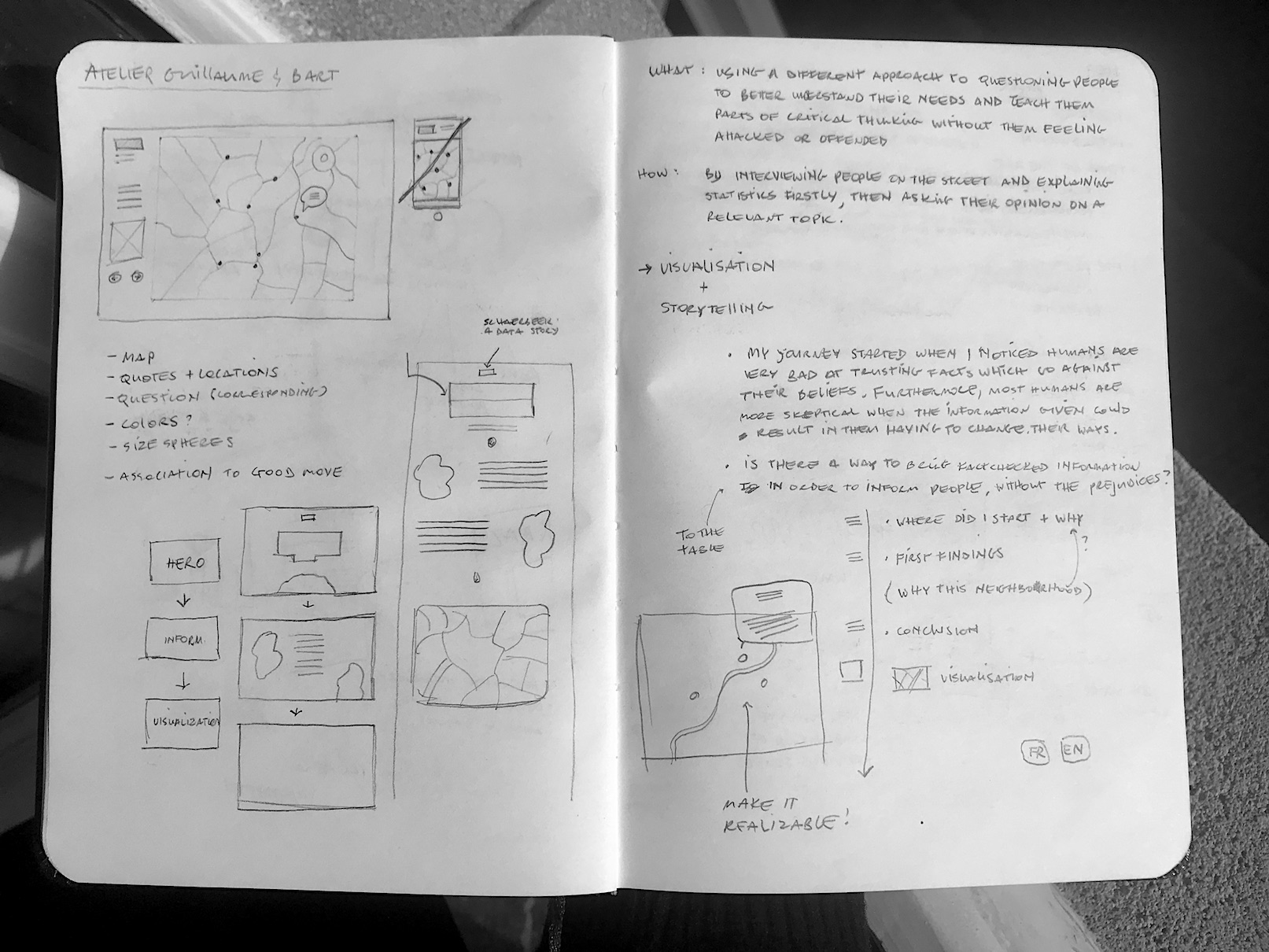


data stories
2022
objectives
The primary objective of this project was to explore and challenge the beliefs and biases of individuals regarding road safety and traffic regulations. Through interviews, the aim was to engage people in meaningful conversations by presenting them with road and traffic statistics in a non-confrontational way. The goal was to encourage thoughtful reflections on their views without making them feel defensive or incriminated.
Additionally, the project aimed to use the gathered qualitative data to create an interactive online visualization that highlights the opinions of residents and workers in a specific neighborhood, juxtaposed with relevant statistics on car usage and road safety.
Additionally, the project aimed to use the gathered qualitative data to create an interactive online visualization that highlights the opinions of residents and workers in a specific neighborhood, juxtaposed with relevant statistics on car usage and road safety.

research
The research phase involved conducting street interviews with residents of Schaarbeek to understand their perspectives on traffic safety. These interviews were designed to uncover underlying biases and prompt interviewees to reconsider their opinions by presenting them with data-driven questions. For instance, rather than directly asking if they speed in prohibited areas, participants were presented with statistics linking speed increases to higher accident rates. This approach aimed to reduce defensiveness and provoke genuine introspection. The interviews provided valuable qualitative data that informed the subsequent phases of the project, including the design of an interactive web application.

development
The development process began with outlining the concept for an interactive web visualization. The visualization would feature a map of the neighborhood where interviews were conducted, with points of interest corresponding to interview locations. Clicking or hovering over these points would reveal quotes and questions posed during the interviews, allowing users to engage with the qualitative data in an interactive manner. The coding of the web application started from scratch and was iteratively refined based on feedback and further analysis. The final product was a dynamic website that effectively communicated the research findings while respecting the perspectives of the interviewees.

information architecture
The information architecture of the web application was designed to guide users through the content in a logical and engaging manner. The site begins with a brief explanation of the project's objectives and methodology, providing context for the map-based visualization. The map itself serves as the central element, with interactive points that users can explore to access specific quotes and related questions. This structure ensures that users can easily navigate the site while maintaining a clear understanding of the relationship between the qualitative data and the broader research goals.

conclusion - feedback
The project successfully achieved its objectives by using interviews to challenge and expand participants' views on road safety while maintaining respect for their perspectives. The interactive web application provided a platform to share these insights with a broader audience, highlighting the importance of asking the right questions and minimizing polarization. The process also offered valuable lessons in research methodology, information architecture, and web development, contributing to the overall effectiveness and impact of the project. The feedback from users and collaborators has been positive, confirming the project's success in fostering thoughtful dialogue around road safety issues.
